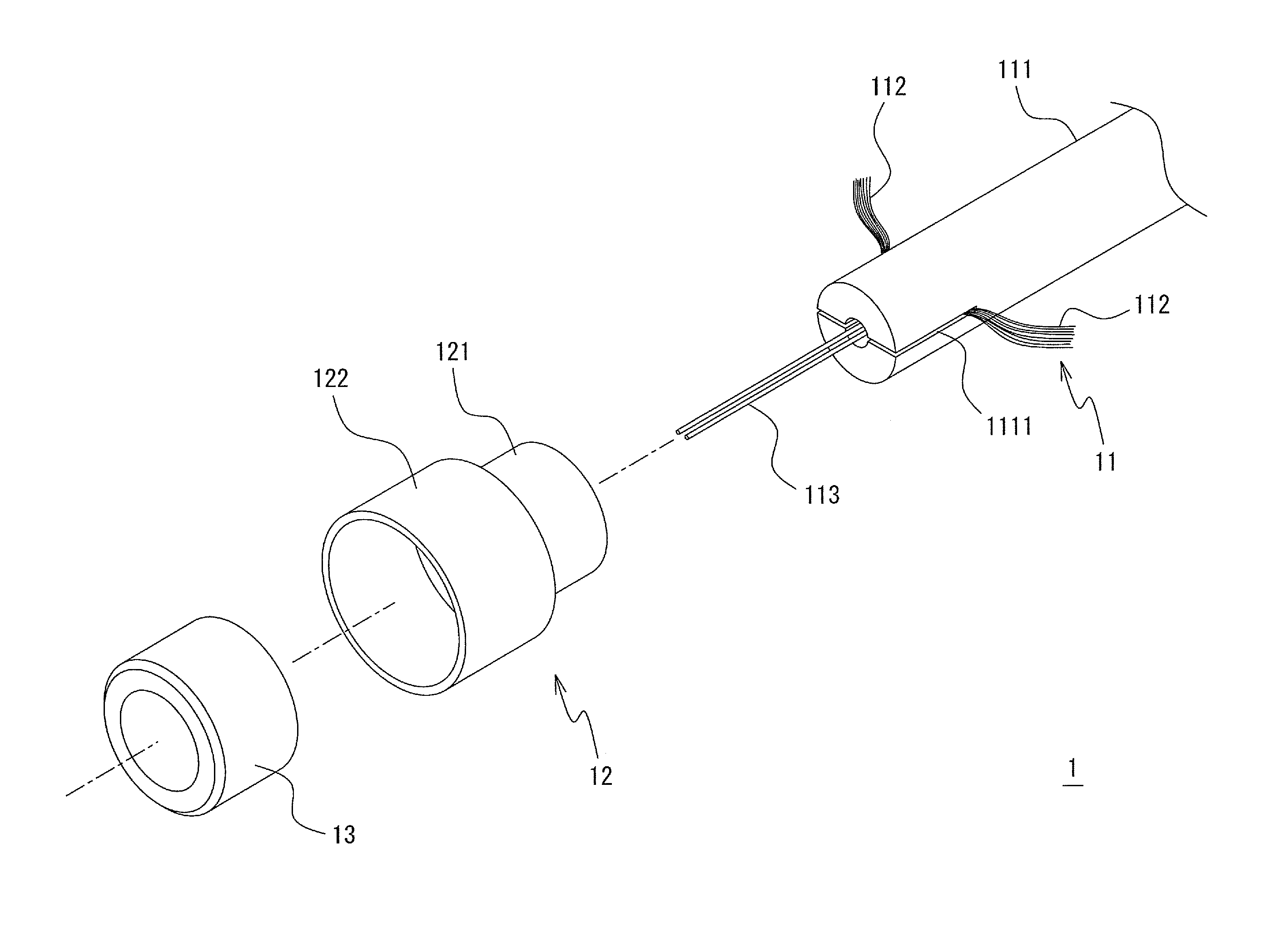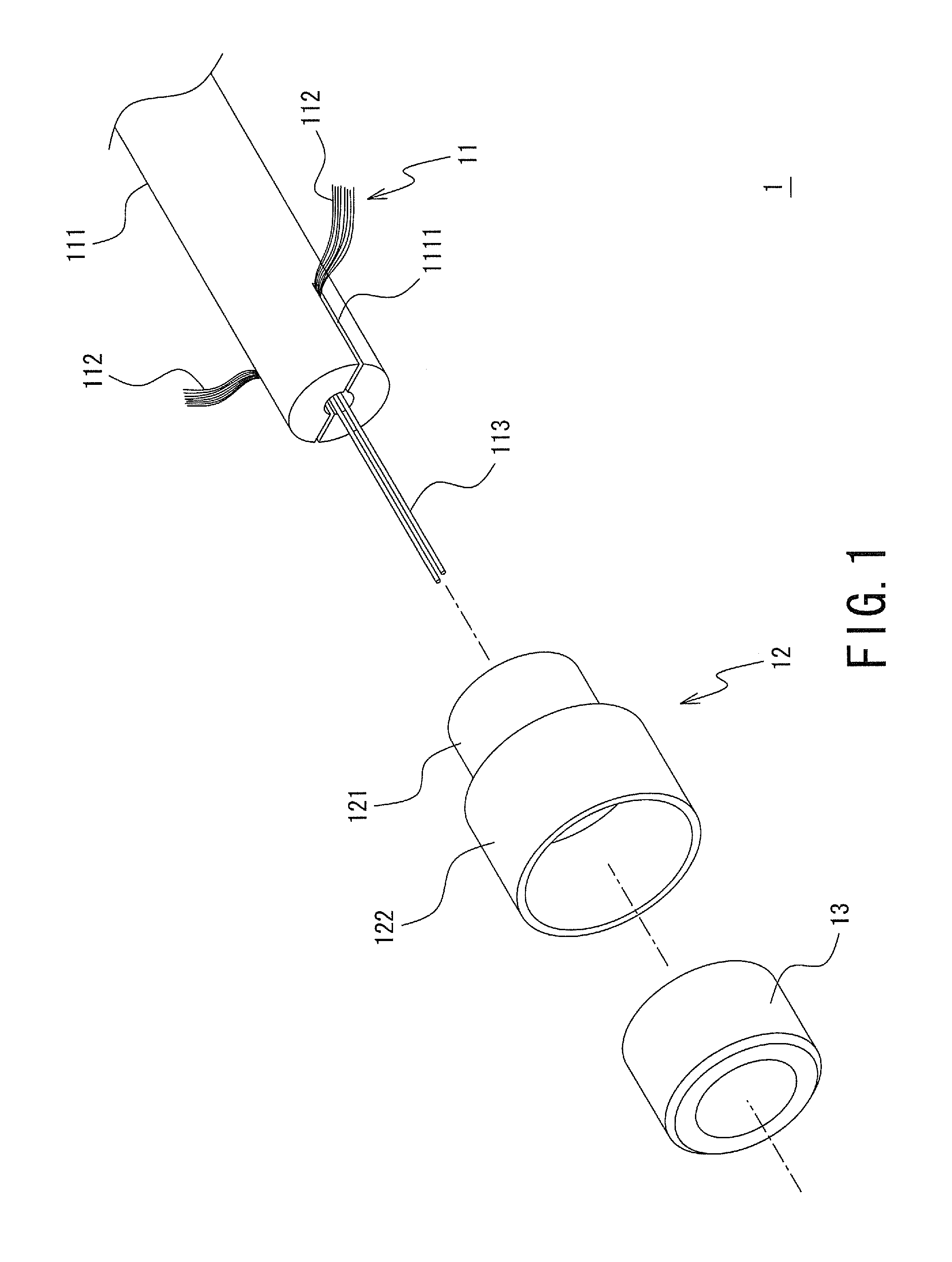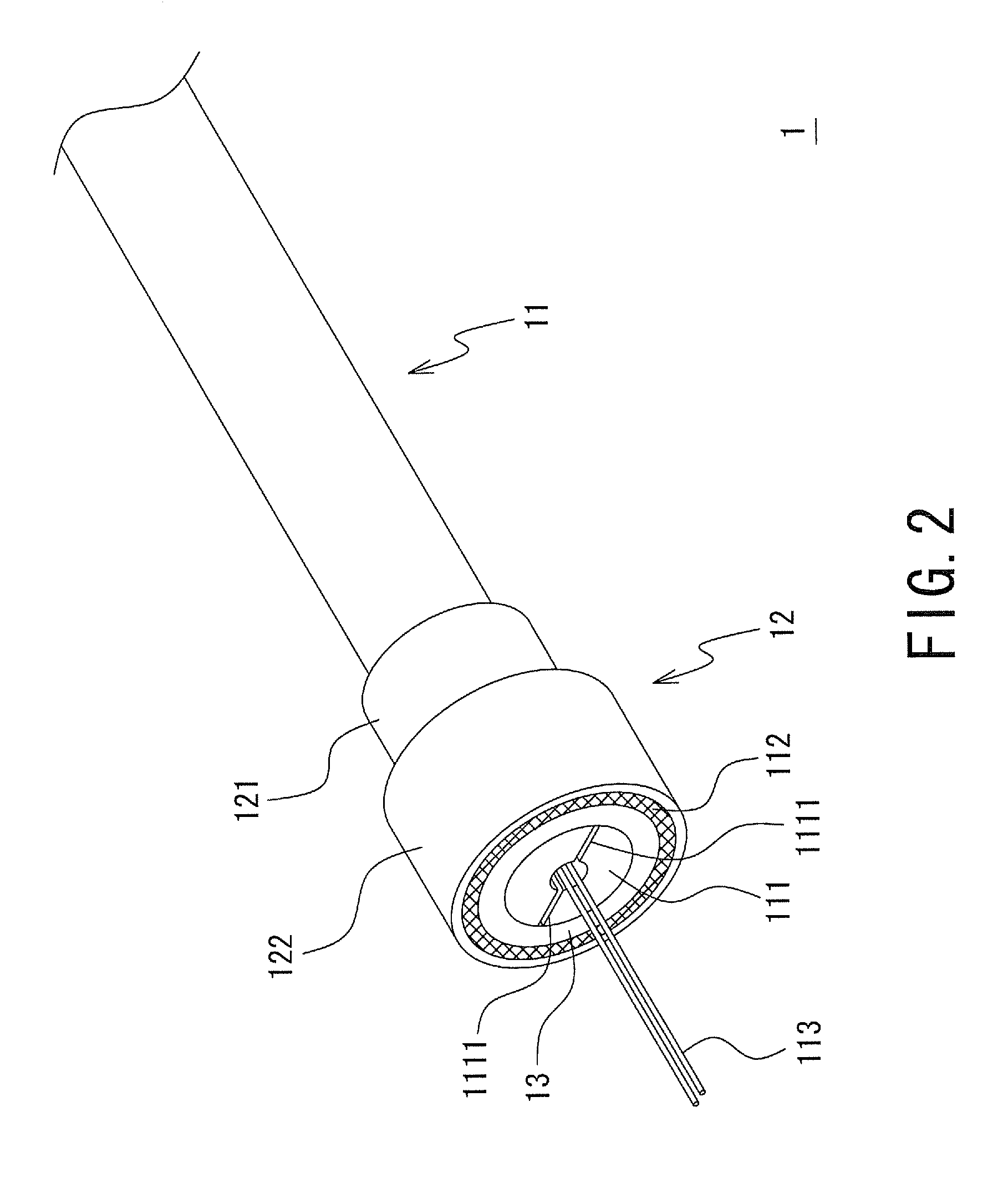Fiber-optic cable with fitting
a fiber-optic cable and fitting technology, applied in the direction of optics, fibre mechanical structures, instruments, etc., can solve the problems of configuration not being able to obtain sufficient increasing the number of components and processes, etc., to increase the fixing strength of the sheath, reduce movement, and increase connection strength
- Summary
- Abstract
- Description
- Claims
- Application Information
AI Technical Summary
Benefits of technology
Problems solved by technology
Method used
Image
Examples
Embodiment Construction
[0028]Detailed descriptions of preferred embodiments of the present invention will now be provided with reference to the accompanying drawings. It is to be noted that hereinafter “an axial direction” of each component of a fiber-optic cable with a fitting of the preferred embodiments of the present invention defines the longitudinal direction of a fiber-optic cable where the built-up fiber-optic cable with the fitting of the preferred embodiments of the present invention is used as a standard. Likewise, “a front-end side” defines the side closer to an end portion of the fiber-optic cable (i.e., the end portion where a fitting is mounted), and “a rear-end side” defines the side farther to the end portion of the fiber-optic cable.
[0029]FIG. 1 is an exploded perspective view showing a configuration of a fiber-optic cable 1 with a fitting of one preferred embodiment of the present invention. FIG. 2 is an external perspective view showing the configuration of the fiber-optic cable 1 with...
PUM
 Login to View More
Login to View More Abstract
Description
Claims
Application Information
 Login to View More
Login to View More - R&D
- Intellectual Property
- Life Sciences
- Materials
- Tech Scout
- Unparalleled Data Quality
- Higher Quality Content
- 60% Fewer Hallucinations
Browse by: Latest US Patents, China's latest patents, Technical Efficacy Thesaurus, Application Domain, Technology Topic, Popular Technical Reports.
© 2025 PatSnap. All rights reserved.Legal|Privacy policy|Modern Slavery Act Transparency Statement|Sitemap|About US| Contact US: help@patsnap.com



